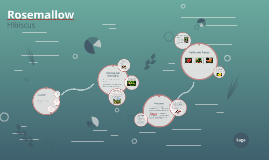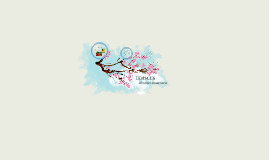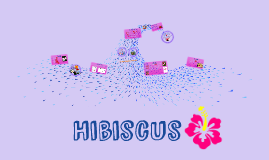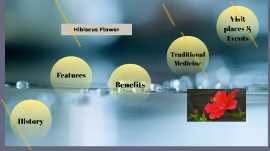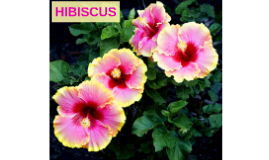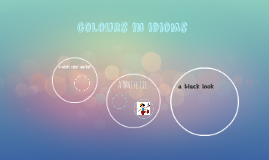Hibiscus
Transcript: Genus: Hibiscus-232 species https://bioweb.uwlax.edu/BIO203/2011/curler_meli/habitat.htm winter Habitat and Climate Hibiscus Most species are entomophilous (pollinated by insects). Some are pollinated by birds. Hibiscus have a deep throat and bulls-eye shape to help pollination. Hibiscus can self-pollinate. In other words, pollen from the male parts of the flower can pollinate the female parts of that same blossom. Hibiscus change color according to temperature and time of day. pollination/seed dispersal SEED DISPERSAL IMPORTANCE AND APPLICATION Tropical Africa, western Asia, central and southern North America summer Kingdom: Plantae Division: Angiosperms Class: Eudicots Order: Malvales Family: Malvaceae Subfamily: Malvoideae POLLINATION FOLKLORE The red hibiscus is the flower of the Hindu goddess Kali, and appears frequently in depictions of her in the art of Bengal, India, often with the goddess and the flower merging in form. Expulsion. Leaves are generally alternate, often palmately lobed or compound and palmately veined. The flowers are commonly borne in definite or indefinite axillary inflorescences, which are often reduced to a single flower. The flowers are large, conspicuous, trumpet-shaped, with five or more petals, color from white to pink, red, orange, purple or yellow, and from 4-18 cm broad. winter>summer The hibiscus flower is traditionally worn by Tahitian and Hawaiian girls. If the flower is worn behind the left ear, the woman is married or in a relationship. If the flower is worn on the right, she is single or openly available for a relationship. The hibiscus is Hawaii's state flower. Physiology A 2008 USDA study shows consuming hibiscus tea lowers blood pressure in a group of prehypertensive and mildly hypertensive adults. Hindu worship. Many species are grown for their showy flowers or used as landscape shrubs, and are used to attract butterflies, bees, and hummingbirds ADAPTATIONS AND DEFENSES It is quite large, containing several hundred species that are native to warm-temperate, subtropical and tropical regions throughout the world Range and Distribution Taxonomy They contain three pigment compounds: Carotenoids, Favenoids, and Anthocyanins. Hotter weather and more light will increase carotenoids in the plant. Anthocyanins are responsible for the blue, purple, pink, red and black spectrum, cold causes them to turn red, and in heat they fade Flavenoids are responsible for the pale yellows and white coloration, in the cold they turn yellow, and in the heat they turn white. The Hibiscus cannot live in regions that reach temperatures lower than 12 degrees Celsius or approximately 56 degrees Farhenheit. Hibiscus does not grow well in wet, waterlogged conditions, preferring soils that are moist but well-drained. Tropical plant Hibiscus are not frost tolerant! Hibiscus plants grow best in area's with high humidity. http://www.hiddenvalleyhibiscus.com/misc/colors.htm






